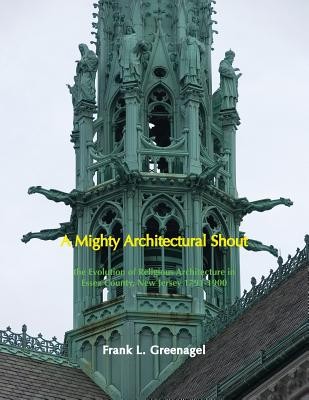| A Mighty Architectural Shout: The Evolution of Religious Architecture in Essex County, New Jersey 1743-1900 Contributor(s): Greenagel, Frank L. (Author) |
|
 |
ISBN: 0981885160 ISBN-13: 9780981885162 Publisher: Wooden Nail Press OUR PRICE: $44.00 Product Type: Paperback Published: May 2013 * Not available - Not in print at this time * |
| Additional Information |
| BISAC Categories: - Architecture | Buildings - Religious - History | United States - State & Local - Middle Atlantic (dc, De, Md, Nj, Ny, Pa) - Architecture | History - Modern (late 19th Century To 1945) |
| Physical Information: 0.83" H x 8.5" W x 11" (2.06 lbs) 406 pages |
| Descriptions, Reviews, Etc. |
| Publisher Description: One hundred and ten churches and meetinghouses and a single synagogue built before 1900 survive in Essex County. Ten are no longer used for religious services, but endure as offices, theaters, a day care center, a Masonic Lodge, even a nightclub. Many are hosting their second, third or even fourth congregation. Where German might have been heard on a Sunday morning in the 1850s and English or Italian in the 1880s, now Spanish or Portuguese is often the language of choice. These remaining buildings are the vestiges of a social and political history and of architectural traditions that span almost 270 years. Changing demographics and neglect have put many of the old churches at risk of closing, or in danger of significant alteration or demolition. Much of the history of American religious architecture is on view in the county as well as important cultural and social values and the religious practices they represent. More than two-thirds of the surviving churches in the county were built after the Civil War, and 55 of those were erected in the last two decades of the nineteenth century. About one quarter of the churches in the county are Presbyterian, and almost one out of five have or had the word German in their name. The nineteenth century was a period of great social and political upheaval, as well as industrial growth; the book focuses on significant economic and social changes -immigration, industrialization, urbanization, and the exceptional religious pluralism-that shaped the county's churchscape. |